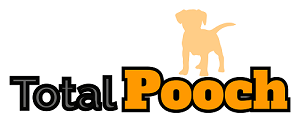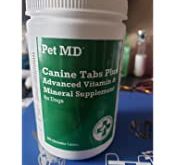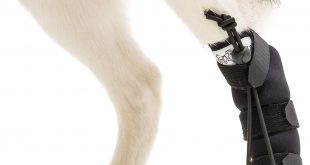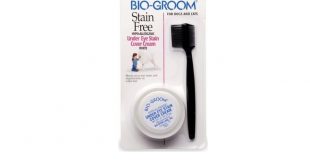Elk velvet supplement is an excellent supplement that provides nutritional support for your dog. Also, it gives the added benefit of improved cardiovascular health and increased vitality. Elk velvet antler extract contains no added artificial coloring, preservatives, artificial flavor, yeast, milk or its derivatives, corn, soy, salt, lactose, wheat, or starch. Also, it is an entirely natural source of vitamin for your pet. Bone and joint problem are common among dogs as they age, and you must give them the right supplement to support them through their old age.
Elk velvet is one of the most reliable bone and joint supplements, and many veterinarians and dog owners recommend it. Most dog owners have positive feedbacks after using Elk velvet for their dogs. So it’s worth giving a trial.
BONE AND JOINT PROBLEM IN DOGS
Just like humans, ageing comes with some problems for your dogs and other animals, and the bone problem is one of them. Besides, it is not only old dogs that suffer from this, but younger dogs can also suffer from bone and joint problems due to some factors other than ageing. The problem can occur due to accident, oversized dog, or nutrient deficiency.
The first sign of a bone problem you will notice in your dog is limping. Dogs of all ages limp and this is due to several reasons. So we will take a look at the various bone problems that affect growing dogs that makes them limp, you should call your vet to examine your dog when you notice limping. It could be a minor problem that is easy to resolve, or it could be severe and requires close attention. In the case of continued limping, an x-ray of the affected legs will be taken to investigate the joints and bones. In most situations, the x-ray photographs will be examined by a vet radiologist for the best diagnosis.
COMMON BONE DISORDER IN DOGS
Below are common diseases that cause lameness in dogs:
Osteochondritis Dissecans (OCD)
This is a problem that occurs at the joints of your dogs, and it is as a result of flaws within the surface cartilage at the joint region. In a dog suffering from OCD, there is an abnormal development of the cartilage at the end of the bone, causing it to separate from the underlying bone. The common area affected is the shoulder joint, but it can also affect other joints such as elbows, hip or knee. Surgery may be recommended if cartilage breaks, and it is floating free at the joint. This condition can cause some serious pains to your beloved pet.
Hypertrophic osteodystrophy (HOD)
This problem occurs as a result of rapid growth.it affects the long bones, and it is caused by inflammation. Most common symptoms include swellings, pains at the joints, loss of appetite, and fever. In some extreme cases, it can cause permanent damage to the growth plate, and this result in deformed legs.
Panosteitis
This is another bone problem that is caused by rapid growth, and it is common referred to as “growing pains”. The problem develops as a result of inflammation on the surface of long bones. The unfortunate thing is that it can affect multiple bones at the same time, leading to “shifting” lameness from one bone to another.
Ununited Anconeal Process (UAP)
This is caused by a complex complication on a small piece of bone located on the rear side of the ulna (the longer of the two bones of the forearm) at the rear of the elbow. The growth plate found in the ulna region closes and fuses as your dog approaches puberty. A dog suffering from UAP will have an unstable elbow joint, which is an excruciating condition, especially when the elbow is extended. Often times, dogs with UAP are usually lame, and the condition can lead to arthritis or degenerative joint disease. Surgery is required to cure UAP.
Elbow Dysplasia
This is a condition that is caused by abnormal development or growth in the elbow joint, and it can lead to problems in 3 different areas of the elbow joint— the humerus, the radius, and the ulna. The three different conditions are referred to as osteochondritis dissecans (OCD), or osteochondritis dissecans (OCD), or fragmented coronoid process (FCP)
Fragmented coronoid process (FCP)
This is a developmental defect around the joint of the elbow on the end of the ulna. Furthermore, a crack or fissure develops, which leads to a separation between the protrusion and the rest of the bone, causing an unstable joint and pain. Surgery is needed in order to avoid arthritis. In some breeds of dogs like Rottweilers, retrievers, and German shepherd, this caused by hereditary.
Hip Dysplasia
This condition occurs when the ball and socket joint at the hip is deformed. Both the ball and socket joint has top grow at the same rate as your dog grows. However, when the two don’t grow at the same rate, hip dysplasia occurs, where the two cannot fit in together appropriately. The makes the hips loose, or out of place, this leads to lameness, pains, and secondary arthritis in your pet. Hip Dysplasia is considered a hereditary disease which is usually found in large-breed dogs like Labrador retrievers, German shepherds, golden retrievers, and Rottweilers.
OTHER BONE DISORDERS IN DOGS
Arthritis
This is an inflammation of a joint in a dog’s body. Although it is common in adult dogs, young pets also stand the risk of having arthritis. When cartilage becomes compromised or damaged, it causes pain and inflammation. As arthritis develops, your dogs will become sluggish while rising and starts experiencing troubles with jumping and climbing.
Osteomyelitis (infection)
This is a bone infection that is caused as a result of a traumatic injury such as laceration, fracture, or bite wound, in which the skin has been compromised. Some infection can also reach the bone via the bloodstream. Dogs with bone infection exhibit symptoms such as fever, laziness, and loss of appetite. The affected area is often swollen, painful, red, and warm when you touch it. Depending on the nature and severity of the infection, your vet may need to perform blood and urine test, asides physical examination.
Fracture
The major cause of fracture in dogs is trauma. Accidents such as falling from a great height, or getting into a fight with another animal which may result in a fracture. Fracture Can either be open or closed. Open (compounded) fracture occurs when a bone breaks and comes out of the skin. This is a severe case that needs the immediate attention of your veterinarian. Pets having fracture experience severe pains, so they become aggressive, and can bite anyone who touches them. Therefore, it is important that you handle your pet with caution when they are in pains.
Metabolic Disorders
The 3 most common metabolic bone diseases are osteochondrosis, Panosteitis, and hypertrophic osteodystrophy. Besides, the exact cause of these diseases is yet to be known, but nutrition is suspected to be one of the major reasons for osteochondrosis and hypertrophic osteodystrophy. These three categories of bone disease mostly affect large-breed dogs. The major sign of metabolic bone disorders, other symptoms such as lethargy, reduced appetite and fever can be observed.
WHY YOU NEED ELK VELVET ANTLER EXTRACT FOR DOGS – JOINT SUPPLEMENT, AND BONE SUPPORT
Elk velvet has some incredible health benefits for your pets, especially for bone and joints. It is the best treatment for pets suffering from arthritis or Osteoarthritis or any of the bones and joints diseases/ disorders mentioned earlier on. Below are some of the benefits of elk velvet for your pet.
- It reduces discomfort in joints and hips
- It helps in the fast recovery of the ligament
- It helps your pet rebuild degenerative and sore joints
- Anti-ageing properties
- Useful in fighting Osteoarthritis
- Enhances stronger bones and teeth
Osteoarthritis is one of the most common sicknesses in a dog. It is estimated that about 20% of dogs over 1-year-old suffer from degenerative joint disease. Healthy joints have cartilages that provide smooth gliding for bones. However, this is absent in dogs suffering from joints disorders.
Velvet antlers contain some important proteins that aid cell growth and repair of joints. It contains proteins such as:
· Amino acids
· Insulin growth factors
· Collagen
It also contains glycosaminoglycans (GAG’s) which includes
· glycosaminoglycans (GAG’s) consisting of:
· Chondroitin sulphate
· Hyaluronic acid
Elk velvet antler extract from “health factors” is one of the most trusted arthritis preventative products in the market today.
INGREDIENTS PRESENT IN ELK VELVET ANTLER EXTRACT FOR DOGS
· Glucosamine Sulfate
· Collagen
· Chondroitin Sulfate
· Essential fatty acids
· Brimming with vitamins
· Enzymes, amino acid
· Minerals
· Growth co-factors
Other ingredients include
· Gelatin Whey
· Stearic Acid
· Magnesium Stearate
Elk velvet antler extract has more than 390 ingredients that work together to help ease and cure knee, hip, and general joint pains.
Nutritional facts
· Thiamin 1mg 67%
· Riboflavin 1mg 59%
· Niacin (as niacinamide) 1mg 5%
· Vitamin B6 (as cyanocobalamin) 1mcg 17%
· Biotin 1mg 333%
· Pantothenic Acid (as calcium pantothenate) 1mg 10%
· Zinc 15mg 100%
· Elk Velvet Antler 250mg
· Nettle Root Powder 110mg *
· Oriental Ginseng (root) 70mg *
· Oligomeric Proanthocyanidins 50mg *
· Cnidium Monnieri 25mg *
· Saw Palmetto (extract) 25mg *
· Inositol 1mg * Coline (Bitratrate) 1mg *
· PABA 1mg *
Recommended Dosage
Serving Size: 2 Capsules
Servings Per Container: 30
It is recommended that you use 2 tablets 1 to 2 times daily for your dog.
 Total Pooch Dog Supplements, Tear Stain Removers, De-wormers, Tylosin for Dogs and other great products.
Total Pooch Dog Supplements, Tear Stain Removers, De-wormers, Tylosin for Dogs and other great products.



